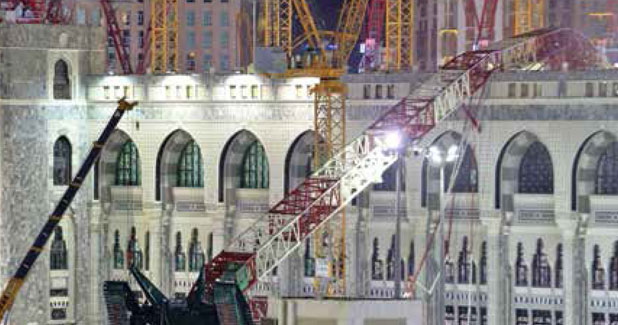
The Deadliest Crane Collapse
The toll is higher ?than any I can remember,? says Jim Wiethorn, chairman and principal engineer for Sugar Land, Texas-based Haag Engineering Co, which has compiled a database of more than 800 crane accidents since the firm began studying them in 1983. A March 2008 tower-crane collapse in midtown Manhattan killed six craft workers and one bystander-the deadliest accident Haag had recorded to date and still the highest for fatalities in the US.
The Grand Mosque failure was a ?result of natural factors-strong wind, severe storms and heavy rains,? according to the state-owned Saudi Press Agency. The Saudi government says it will investigate the accident and publicise its findings. The crane is one of many in use for a multibillion-dollar expansion of Islam?s holiest site. Officials at German crane manufacturer Liebherr confirm the model is an LR 11350, with a lifting capacity of 1,350 tonne. ?As the crane manufacturer Liebherr does everything in its power to help bring the accident investigation to a speedy and logical conclusion,? a spokesman for Liebherr said.
An industry source, said that investigators likely would look at how the crane was stowed prior to the storm. Workers usually lower the boom to an angle of 60? or less and, if equipped with a luffing jib, rest the tip on a dolly on the ground, the source said. If there is not enough room to stow the jib, workers would secure the structure with guy wires.
Although the crane was not in operation at the time, workers appeared to have left the boom and jib in the working position.
Initial findings
On September 15, the government of Saudi Arabia announced their preliminary findings on the accident, saying in a release through the state-owned Saudi Press Agency that ?the main reason for the accident is the strong winds while the crane was in a wrong position.?
The focus now shifts to the main contractor on the site, Saudi Binladin Group (SBG). The Saudi government has announced a suspension of work by the contractor in the country, after the initial inquiry found it had not ?respected the norms of safety?.
Information courtesy: ENR.com
Liebherr?s Findings
According to the findings of the Liebherr crane experts sent to Saudi Arabia, the LR 11350 was erected at the time of the accident with a boom length of approximately 190 m, parked outside of the Grand Mosque and put out of operation. Previously it had sporadically been used for assembly works. In the late afternoon of September 11, 2015, during a strong thunderstorm and sandstorm with measured wind speeds of 80 km/h (according to the CNN Weather Service) and 105 km/h (wind recording of a Liebherr tower crane near the place of accident), heavy rain falls and a sudden drop in temperature by 20oC, the crawler crane was caught by the wind and tilted over the last support rollers of its crawler tracks.
The operating instructions of the LR 11350 and the associated ?Wind Speed Charts? show that the crawler crane could not withstand such a high wind load and that the boom should have been lowered to the ground preventatively to avoid the tilting of the crawler crane.
In the meantime Liebherr has taken this very tragic accident in Mecca as reason to point out again to the operators of comparable Liebherr cranes worldwide the influences that wind has on cranes and to the unconditional compliance with the appropriate regulations mentioned in the operating instructions.


 +91-22-24193000
+91-22-24193000 Subscriber@ASAPPinfoGlobal.com
Subscriber@ASAPPinfoGlobal.com